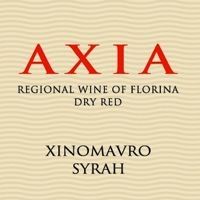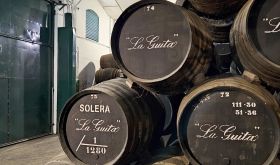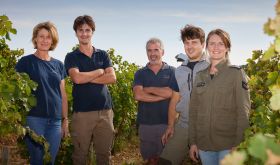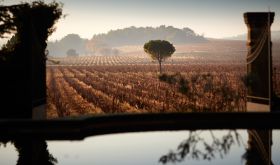From €13.85, £13.95, US$15.99
Find this wine
This 50/50 blend of Xinomavro and Syrah was designed, according to winemaker Angelos Iatrides, 'in order to introduce Amyndeon Xinomavro to the international market'. Iatrides set up Alpha Estate with his business partner and viticulturist Makis Mavridis in the late 1990s, a tale told in much greater detail in Greek profiles 4 – Alpha Estate, Amydeon. Since their first experimental vintages in 2000 and 2001, their track record and steady progress, in terms of both quality and recognition, have been remarkable.
While I am a passionate proponent of high-quality indigenous grape varieties, as my list of top 50 Portuguese wines proves, I am not such a zealot about these things that I cannot appreciate what Alpha are trying to do with this blend of the less-known Xinomavro, native to Greece, and the more widely recognised French variety Syrah. (For the intricate debate about Syrah's orgins, you will have to wait until the publication of Wine Grapes this October.) There's clearly two sides to the argument, as discussed a few years ago after my trip to northern Greece in Greece backs indigenous varieties.
The argument is not just about maintaining a country or region's viticultural heritage and distinctiveness but also about how to show off a vineyard's natural environment to its best advantage. As Iatrides said when I interviewed him back then, just before they launched Axia, 'No winemaker can deny that in a great terroir the special typical attributes and characteristics of many grape varieties could be elevated. Our Syrah could most definitively maintain the argument that the cultivation of this variety in Amyndeon is a case study (rich, powerful, typical).'
Alpha Estate, Axia 2008 IGP Amydeon clearly extols the virtues of this part of north-western Greece: temperatures moderated by significant day-night
 temperature swings due to the elevation, by the cooling effect of the nearby lake and by constant winds as well as naturally low yields thanks to sandy soil. But it also demonstrates the complementarity of these two varieties.
temperature swings due to the elevation, by the cooling effect of the nearby lake and by constant winds as well as naturally low yields thanks to sandy soil. But it also demonstrates the complementarity of these two varieties. Here's my tasting note on the wine:
Deep ruby. Vibrant, peppery dark fruit. Really peppery and just a hint of red-cherry sweetness behind that and very faintly floral. Impressive fruit concentration married to lovely natural freshness, even after several years in bottle, then the pepper kicks in on the long finish and the taninins provide a discreet framework with a slightly savoury aftertaste. Juicy and lively but not simple. So youthful still. Just a very slight warmth on the finish. A crossover style between fruit intensity and elegance. Long, too. Delicious.
The fruit is harvested by hand from two subregions on the Amydeon plateau – Petres ('rocks') and Dromos ['road') – then destemmed but not crushed, fermented in tank at a gradually increasing temperature and spends seven months on the lees before maturing for up to a year in French oak.
Axia red 2008 is more widely available in restaurants than in the off trade but it is particularly well distibuted in the the US: in Chicago (Binnys), California (K&L, Beltranos), New York (Suburban Wines, Mission Fine Wines, Saratoga Wine Exchange), Washington DC (Pearson's Wine & Spirits). Invity Wines and Slurp are selling it online in the UK, Slurpvin in France.
Incidentally, Alpha Estate, Axia Malagousia 2011 PGI Florina, the white partner to the Xinomavro/Syrah blend, is also very good – generously aromatic while retaining a fine line of acidity and impressive length.
Find this wine














